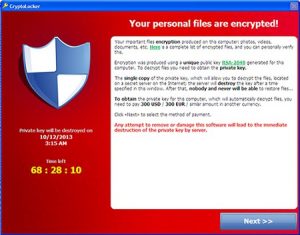In today’s world, where almost every aspect of life is connected to the internet, awareness of cybersecurity is more important than ever. Our digital footprints, from financial management to maintaining relationships, are extensive and valuable. However, cybercriminals continuously adapt, finding new methods to exploit vulnerabilities and steal sensitive data.
The good news is that improving your cybersecurity awareness doesn’t require technical skills or costly tools. By following these five straightforward steps, you can greatly minimize your risk and navigate the online world with assurance.
Step 1: Grasp Cybersecurity Fundamentals
Awareness of cybersecurity starts with understanding the threats you face. Cybersecurity entails protecting systems, networks, and data from digital attacks, while awareness involves recognizing risks and knowing how to react.
Common threats include phishing, ransomware, and data breaches, which exploit weaknesses in software, networks, or human behavior. Simple actions like clicking unknown links or using similar passwords can leave you vulnerable.
Educating yourself on these risks empowers you to make safer online choices.
Step 2: Develop Strong Password Habits
Passwords are essential to your digital security; weak or reused passwords can leave you exposed. Strong passwords should be long, complex, and unique for each account.
Incorporate a mix of uppercase and lowercase letters, numbers, and special characters while avoiding obvious choices like birthdays. A memorable yet secure option is a passphrase—an unconventional sentence meaningful to you.
Consider using a password manager for unique password storage and generation. Always activate two-factor authentication (2FA) for added protection—this ensures that even if someone obtains your password, they still need a secondary verification method.
Step 3: Recognize and Avoid Phishing Scams
Phishing is a prevalent and effective tactic employed by cybercriminals. These scams often masquerade as legitimate communications, deceiving victims into divulging sensitive information or downloading harmful files.
Watch for emails with urgent language, unfamiliar senders, or unexpected attachments as red flags. An email claiming your bank account is locked and requiring immediate action is a classic phishing attempt.
Always confirm the sender’s email address and refrain from clicking links without prior inspection. When uncertain, contact the company or individual through verified means. Trust your instincts—if something seems suspicious, it probably is.
Step 4: Safeguard Your Devices and Networks
Your devices and networks are critical to your online safety. Keeping them secure is vital for cybersecurity awareness. Regular software updates fix vulnerabilities and implement new features.
Firewalls and antivirus programs serve as shields against unauthorized access and threats. Ensure these measures are installed, updated, and actively in use on your devices.
For your home network, secure your Wi-Fi with a strong, unique password. Avoid public Wi-Fi for sensitive tasks like online banking, or use a virtual private network (VPN) if necessary.
Step 5: Foster a Habit of Ongoing Education
Cybersecurity is a continuous commitment. As cybercriminals constantly evolve, staying informed is essential. Follow credible cybersecurity blogs, news sources, and organizations to stay current on the latest threats and practices.
Share your knowledge with friends and family to promote awareness in your community. Regularly examine your personal security settings for outdated passwords, inactive accounts, or unsecured devices.
By developing these habits, cybersecurity awareness will become second nature, enhancing your safety in the digital realm.
Conclusion
Enhancing your cybersecurity awareness might seem overwhelming, but these five simple steps can significantly improve your security. By grasping the basics, strengthening your passwords, recognizing phishing scams, safeguarding your devices, and remaining informed, you can establish a strong defense against cyber threats.
Start taking action today. Even small efforts can lead to significant improvements in your online safety, providing peace of mind in an increasingly digital landscape. Stay vigilant, stay informed, and stay safe.
https://www.youtube.com/watch?v=BEdOVyoPGKg
 The 2018 update of the Oxford English Dictionary will include ransomware as a new entry, and this announcement just happens to coincide with a new zero-day exploit that bypasses security measures of popular cloud computing services such as Office 365 and Google Drive.
The 2018 update of the Oxford English Dictionary will include ransomware as a new entry, and this announcement just happens to coincide with a new zero-day exploit that bypasses security measures of popular cloud computing services such as Office 365 and Google Drive.